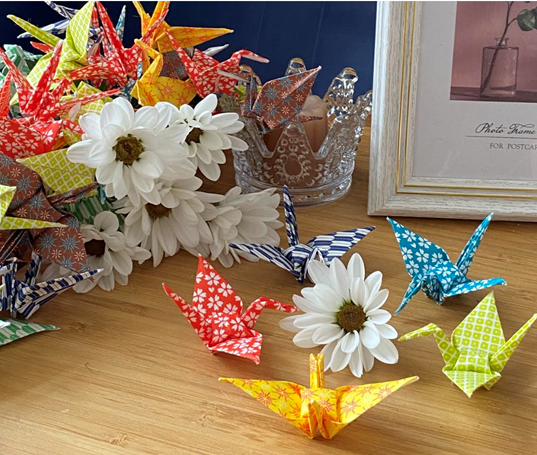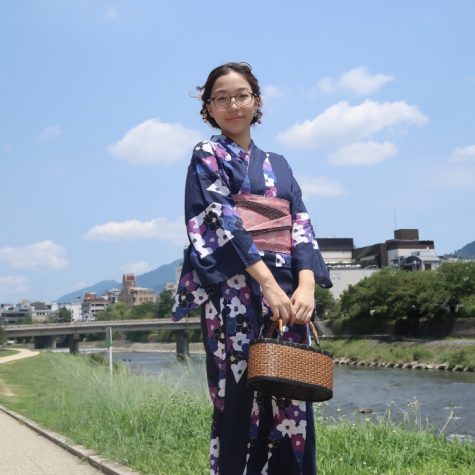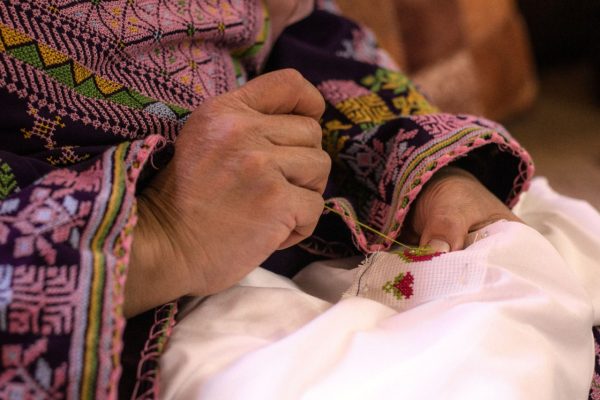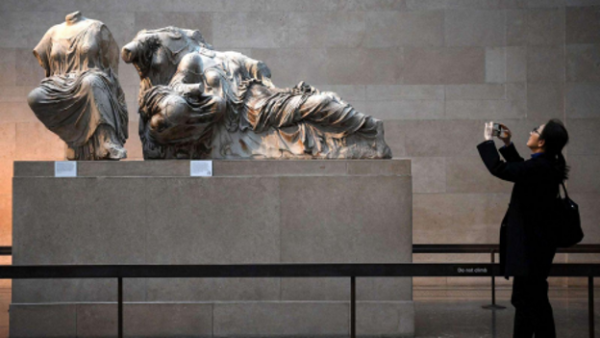The Beauty of Origami
Do you have a wish you desperately want to grant?
Well, you could have a go at folding a thousand origami cranes to help boost your chances of fulfilling your wish. It is believed that folding a thousand paper cranes enables one’s wish to come true. An amusing fact about this Japanese legend is that the very first book published about origami was called ‘Sembazuru Orikata’ (How to Fold a Thousand Cranes), written by Akisato Rito, and published in 1797.
Senbazuru, also known as ‘thousand paper cranes’, symbolises good fortune, blessing and long life. Cranes are well-known to have long lifespans and have been familiar to Japanese people as lucky animals since ancient times. In myth, cranes are said to live 1000 years, hence the folding of a crane each year. You will see them hung up in temples and memorials all over Japan. Since World War II, paper cranes have symbolised hope and peace in Japan. Coincidentally, cranes have also become the most popular pattern to be folded worldwide. Intricate and delicate, the origami crane has been loved for centuries. Its history is resounding, and its symbolism is a heartening message of hope and unconditional devotion.
Of course, there are many other patterns of origami that have powerful meanings. The best part of origami is that you can be creative and try creating your own origami pattern that is special only for you. Origami can be enjoyed by everyone, from beginners to intermediates to experts. It is an art form which allows everyone to enjoy and feel the satisfaction of creating art. Origami can also be a great, inexpensive, sentimental gift to give to your friends and family. I have folded and gifted dozens of origami to others to add a unique finishing touch and to personalise my gifts more.
Another incentive for you to try origami today is that origami provides an opportunity to relax and fosters creativity. The enjoyment of this activity is undoubtedly good therapy, and there are infinite possibilities. You can fold origami by collaborating with your friends and family to create a more complex, time-consuming origami piece together. Doing origami in a group setting cultivates a sense of belonging and respect for one another.
Transforming a two-dimensional piece of square paper into a three-dimensional figure is a unique practice that develops spatial reasoning. Through hands-on activities, people are able to learn the concept of symmetry and manipulate basic geometric shapes such as squares, rectangles, and triangles. When they follow instructions through the paper-folding challenges, both their brains’ motor and visual areas are activated.
Origami has also been used in therapy to help children with ADHD (Attention-Deficit Hyperactivity Disorder) to develop concentration skills, and it has been found to help with anxiety. Origami can be relaxing, since for the period of the activity, you are only focusing on the actions to encourage mindfulness and patience. There are many other unrecognised benefits of origami, such as the fact that origami has been proven to involve many concepts relevant to mathematics. This is why origami has also begun to be used as an educational tool in schools.
There are various ways of folding origami, even after you become accustomed to it. Some methods include a technique called ‘wet-folding’. Wet-folding is an origami technique devised by Akira Yoshizawa. It uses water to dampen the origami paper to add an element of sculpture to origami, making the art look far more realistic than it otherwise would have been.
Akira Yoshizawa is also often known as the ‘grandmaster of origami’. He passed away in 2005, but it is estimated that he had created over 50,000 different figures during his lifetime.
Yoshizawa was the one who published ‘Atarashi Origami Geijutsu’ (‘New Origami Art’) in 1954. This book affirmed the foundation for symbols and notations we use today when describing how to fold a specific pattern. The publication of this book was also the catalyst that turned him into an origami star. Yoshizawa spent the rest of his life serving as a “cultural ambassador” for Japan. He brought greater awareness of origami techniques to the entire world.
Another surprising, wondrous fact about origami is that origami has heightened the understanding of geometric concepts, making them come alive. By labelling an origami structure with length, width, and height, students learn essential terms and methods to describe a shape. In addition to math, origami is a fantastic way to incorporate science, technology, engineering, art, and math together: STEAM. Origami improves not only 3D perception and logical thinking but also focus and concentration. If you are ever looking for a fun way to spend a five-minute break, next time, try origami!
All in all, there are various ways of exploring and experimenting with the unique art of origami. I hope you’ll give it a go, as origami is enjoyable for all ages and abilities. It also has many well-researched benefits you never would have considered while creating fun, unique art.
Sources and Recommended Reading:
https://www.edutopia.org/blog/why-origami-improves-students-skills-ainissa-ramirez

















